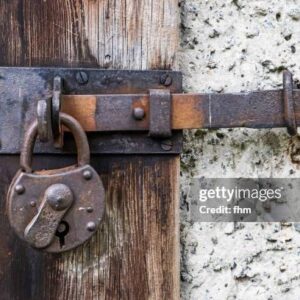(Recap – In the last episode I narrated about the satisfactory running of my dream project i.e. the printing press and owning a fortnightly magazine. One day, my sub-editor of the magazine entered my office with an envelop, that had been dropped in and received by my office few months ago but had been misplaced by human err. Now on recovering that letter, the sub-editor with an apology placed that before me. )
As I told earlier, by going through the names of sender and addressee on the assigned place upon the envelop, I was in an emotional shock and began to plunge into the vista of memory lane, that deeply related to the memoirs of my post graduation college life in the village of paternal aunt in her village. The truth is, I don’t find the proper words to describe my emotional set back. Whatsoever, this lengthy pretext I just penned down, it is perhaps to share my emotions with readers at large, as a regret or penitence with an intent whatsoever. The series of incidences in shape of story, I am going to relate probably may not occur with every one in life; but in this or that way every one encounters such kind of happenings. It’s up to you to decide about that ……
In the year of 1982, when I sought admission in post graduation ( M. Sc.) course in the main campus of the University in the hill side city, I was at the thresh hold of youth. I was about nineteen years old, the age that is considered as the age of adolescence. As I already have described, in that period of time, it was an honor for a youth to be the student of post graduation with some Science subject. My that position fetched me the repute not merely in the village of the aunt but also in villages in the vicinity and my name and fame got spread in the area as one of the brilliant chap and people generally recognized me as the “nephew” of my aunt.
When I am talking about the villages of hill side, the image of a village conjured in the mind of readers of plain sides is quite different. In the plain side often villages are of big size, people in possession of big holdings as arable land and a landscape of huge clusters of houses locating in the specific area. But barring a few exceptions, the villages of hill sides were smaller in size like hamlet and you don’t find villages one after another in a sequence. Often, such tiny villages are scattered at some distance of kilometers, in the way that if this particular village was locating in the lap of a ledge of this locality then another located in the lap of steep of some other hill.
It was not uncommon to reach from such one village to another by traversing through some arduous gradient and upward steep. The reason for settlement of such kind of villages was, it was not possible to populate a place as a village until and unless some plain land to build the house and for farming cultivation was not available. In hill side agriculture was and still is solely based on monsoon rain and no any man made facility of irrigation we find there as we often witness in the plain sides’ villages. Even the issue of availability of potable water sources were scarce and often every such village had a good reason to be inhabited only because of the availability of the drinking water source.
The naming of brook as Timru brook ?
At some central point of of such two or three villages, at some place, a water source in shape of little stream spouting at the foot of some steep, were bound to be present and the period of time, I am talking, the issue of potable water was so ghastly. No doubt, Mother Nature from its inception has almost been helpful to mankind to provide such source of drinking water, which run whole through the year and from such sources, denizens of surrounding scattered villages fetch the water. These sources sometimes spouted in shape of small streams, so given the name as brook. From these sources, people carried potable water collecting that into their traditional metallic pitcher, ( In vernacular, such pot or container were called as “Buntha.”)
The rest of streaming water were simply collected in a makeshift pool, where women from the surrounding villages often wash and rinse the dirty clothes of the family members. In the village of my paternal aunt, there too located such kind of a brook, at about one km distance, at the foot of an ascending hillock. This water source, in shape of a brook had a feature, at the ground level from where water jet spouted from a small abrupt steep, just above that steep, along with other species of Wild Himalayan plants, stood a cluster of shrub “Timru Plants.”
In fact, Timru (a vernacular plant,) is a hilly species of shrub that had had its own kind of importance because of its medicinal values. The cluster of Timru plants were somewhat taller and thicker in volume, in comparison to other plants of its same family and because of that cluster, the source of water had a name, “Timru brook.” On the meanwhile, I would like to mention about a tradition of hill sides. Rather it was a custom that used to be followed the wedding of a boy. In this custom, on receiving the bride at the in- laws’ house, women of village of groom, be they married or unmarried girls, they all in a group would take such newly married bride ceremoniously with a “sing up” of traditional folk songs to such a source of water. There bride was to carry a pot, to be filled with water and be fetched back to home on the head by the bride.
It was simply a way to introduce and get acclimatize the newly wedded bride to the circumstances of the availability of water source in the area as the “essential commodity,” and how far away it was and how in future she was to accommodate with the situation. This ceremony usually were observed in a cheerful air.
My daily routine to the college was, to ascend on foot from my stay and meander down to the college in the morning and after finishing the theory and practical classes, ascend back home after noon. As it had ever been the undulating schedule of degree colleges, at that period of time in India, seldom once in a year, there would be convened students’ Union election or students’ agitation pertaining to some students’ issues or political issues. In maximum, occasions of holidays were abundant but faculty some how managed to get us complete the course of the year, other wise students relied on the self study at the home. ( End of the Part- 3. Cont’d. ) Penned by — Vinay Pharasi


